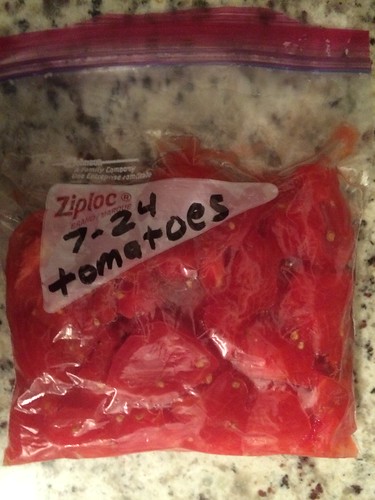Water signal [w. s.]) (a) and intrahepatic lipid concentration (IHCL, given in of water signal [w. s.]) at baseline, day  10 of IT and during follow up (181?9 days) (b). Gray bars indicate IT-group and empty bar the OTgroup; error bars delineate SEM. doi:10.1371/journal.pone.0050077.gInsulin Alters Myocardial Lipids and MorphologyFigure 3. Association between mean glucose concentrations at day 1 and MYCL content at day 10 of IT. doi:10.1371/journal.pone.0050077.gAt follow up improvement of metabolic control might have returned
10 of IT and during follow up (181?9 days) (b). Gray bars indicate IT-group and empty bar the OTgroup; error bars delineate SEM. doi:10.1371/journal.pone.0050077.gInsulin Alters Myocardial Lipids and MorphologyFigure 3. Association between mean glucose concentrations at day 1 and MYCL content at day 10 of IT. doi:10.1371/journal.pone.0050077.gAt follow up improvement of metabolic control might have returned  MYCL to baseline. These results are in accordance with previous data showing a parallel decrease in MYCL and HbA1c during treatment with 12926553 pioglitazone and insulin in patients with T2DM [15]. Insulin therapy did not inhibitor induce an acute rise in hepatic lipid content in the present study, suggesting that myocardial lipids are more sensitive to insulin compared to hepatic lipids. Since the muscle-type CPT1B is 10?00 fold more sensitive to Epigenetic Reader Domain malonyl-CoA compared to liver-type CPT1A [40] the heart might be especially susceptible to substrate competition between fatty acids and glucose. Therefore, insulin might preferentially induce myocardial steatosis in the presence of hyperglycemia. In our study myocardial mass and thickness acutely increased in response to IT leading to morphological changes of the left ventricle. In accordance, investigations in animal models have shown that exogenous insulin supply induces myocardial hypertrophy and interstitial fibrosis by activation of key mitogenic signaling pathways including angiotensin, MAPK-ERK1/2 and S6K1 [41?3]. However, in the present study metabolic and structural changes of the myocardium due to IT were not associated with altered left ventricular function. This observation might be explained by the finding of Condorelli et al. emphasizing that a mild activation of Akt through PI3k, which is primary induced by ligation of transmembrane receptor (e. g. insulin-like growth factor-1 or insulin receptor), leads to cardiac hypertrophy but is not accompanied by cardiac dysfunction [44]. It is a limitation of the current study that the employed MR methods did not allow discerning the precise alterations in myocardial fuel metabolism. Since biopsies of human myocardium are not feasible in a research setting, investigations on human myocardial metabolism are limited to non-invasive techniques. Inaddition, we cannot exclude a potential effect of the standardized diet 1516647 and the continued intake of statins on myocardial lipid content during the in-patient setting. However, withholding these treatment regiments would have been ethically unacceptable. In order to achieve adequate glycemic control insulin therapy is commonly initiated in patients with longstanding T2DM and relative insulin deficiency. The study protocol resembles standardized therapeutic regiments frequently applied in hospital setting worldwide. Thus, the present study provides a mechanistic concept potentially relevant for numerous patients on insulin therapy. We have shown that hallmark-parameters of diabetic cardiomyopathy, myocardial steatosis and hypertrophy, are acutely affected by IT in the presence of hyperglycemia. However, initiation of IT was not associated with short-term changes in myocardial function. Due to the limited number of patients and the short observation period, we cannot draw definitive conclusions or make recommendations for clinical practice on the basis of the present results. Thus, future prosp.Water signal [w. s.]) (a) and intrahepatic lipid concentration (IHCL, given in of water signal [w. s.]) at baseline, day 10 of IT and during follow up (181?9 days) (b). Gray bars indicate IT-group and empty bar the OTgroup; error bars delineate SEM. doi:10.1371/journal.pone.0050077.gInsulin Alters Myocardial Lipids and MorphologyFigure 3. Association between mean glucose concentrations at day 1 and MYCL content at day 10 of IT. doi:10.1371/journal.pone.0050077.gAt follow up improvement of metabolic control might have returned MYCL to baseline. These results are in accordance with previous data showing a parallel decrease in MYCL and HbA1c during treatment with 12926553 pioglitazone and insulin in patients with T2DM [15]. Insulin therapy did not induce an acute rise in hepatic lipid content in the present study, suggesting that myocardial lipids are more sensitive to insulin compared to hepatic lipids. Since the muscle-type CPT1B is 10?00 fold more sensitive to malonyl-CoA compared to liver-type CPT1A [40] the heart might be especially susceptible to substrate competition between fatty acids and glucose. Therefore, insulin might preferentially induce myocardial steatosis in the presence of hyperglycemia. In our study myocardial mass and thickness acutely increased in response to IT leading to morphological changes of the left ventricle. In accordance, investigations in animal models have shown that exogenous insulin supply induces myocardial hypertrophy and interstitial fibrosis by activation of key mitogenic signaling pathways including angiotensin, MAPK-ERK1/2 and S6K1 [41?3]. However, in the present study metabolic and structural changes of the myocardium due to IT were not associated with altered left ventricular function. This observation might be explained by the finding of Condorelli et al. emphasizing that a mild activation of Akt through PI3k, which is primary induced by ligation of transmembrane receptor (e. g. insulin-like growth factor-1 or insulin receptor), leads to cardiac hypertrophy but is not accompanied by cardiac dysfunction [44]. It is a limitation of the current study that the employed MR methods did not allow discerning the precise alterations in myocardial fuel metabolism. Since biopsies of human myocardium are not feasible in a research setting, investigations on human myocardial metabolism are limited to non-invasive techniques. Inaddition, we cannot exclude a potential effect of the standardized diet 1516647 and the continued intake of statins on myocardial lipid content during the in-patient setting. However, withholding these treatment regiments would have been ethically unacceptable. In order to achieve adequate glycemic control insulin therapy is commonly initiated in patients with longstanding T2DM and relative insulin deficiency. The study protocol resembles standardized therapeutic regiments frequently applied in hospital setting worldwide. Thus, the present study provides a mechanistic concept potentially relevant for numerous patients on insulin therapy. We have shown that hallmark-parameters of diabetic cardiomyopathy, myocardial steatosis and hypertrophy, are acutely affected by IT in the presence of hyperglycemia. However, initiation of IT was not associated with short-term changes in myocardial function. Due to the limited number of patients and the short observation period, we cannot draw definitive conclusions or make recommendations for clinical practice on the basis of the present results. Thus, future prosp.
MYCL to baseline. These results are in accordance with previous data showing a parallel decrease in MYCL and HbA1c during treatment with 12926553 pioglitazone and insulin in patients with T2DM [15]. Insulin therapy did not inhibitor induce an acute rise in hepatic lipid content in the present study, suggesting that myocardial lipids are more sensitive to insulin compared to hepatic lipids. Since the muscle-type CPT1B is 10?00 fold more sensitive to Epigenetic Reader Domain malonyl-CoA compared to liver-type CPT1A [40] the heart might be especially susceptible to substrate competition between fatty acids and glucose. Therefore, insulin might preferentially induce myocardial steatosis in the presence of hyperglycemia. In our study myocardial mass and thickness acutely increased in response to IT leading to morphological changes of the left ventricle. In accordance, investigations in animal models have shown that exogenous insulin supply induces myocardial hypertrophy and interstitial fibrosis by activation of key mitogenic signaling pathways including angiotensin, MAPK-ERK1/2 and S6K1 [41?3]. However, in the present study metabolic and structural changes of the myocardium due to IT were not associated with altered left ventricular function. This observation might be explained by the finding of Condorelli et al. emphasizing that a mild activation of Akt through PI3k, which is primary induced by ligation of transmembrane receptor (e. g. insulin-like growth factor-1 or insulin receptor), leads to cardiac hypertrophy but is not accompanied by cardiac dysfunction [44]. It is a limitation of the current study that the employed MR methods did not allow discerning the precise alterations in myocardial fuel metabolism. Since biopsies of human myocardium are not feasible in a research setting, investigations on human myocardial metabolism are limited to non-invasive techniques. Inaddition, we cannot exclude a potential effect of the standardized diet 1516647 and the continued intake of statins on myocardial lipid content during the in-patient setting. However, withholding these treatment regiments would have been ethically unacceptable. In order to achieve adequate glycemic control insulin therapy is commonly initiated in patients with longstanding T2DM and relative insulin deficiency. The study protocol resembles standardized therapeutic regiments frequently applied in hospital setting worldwide. Thus, the present study provides a mechanistic concept potentially relevant for numerous patients on insulin therapy. We have shown that hallmark-parameters of diabetic cardiomyopathy, myocardial steatosis and hypertrophy, are acutely affected by IT in the presence of hyperglycemia. However, initiation of IT was not associated with short-term changes in myocardial function. Due to the limited number of patients and the short observation period, we cannot draw definitive conclusions or make recommendations for clinical practice on the basis of the present results. Thus, future prosp.Water signal [w. s.]) (a) and intrahepatic lipid concentration (IHCL, given in of water signal [w. s.]) at baseline, day 10 of IT and during follow up (181?9 days) (b). Gray bars indicate IT-group and empty bar the OTgroup; error bars delineate SEM. doi:10.1371/journal.pone.0050077.gInsulin Alters Myocardial Lipids and MorphologyFigure 3. Association between mean glucose concentrations at day 1 and MYCL content at day 10 of IT. doi:10.1371/journal.pone.0050077.gAt follow up improvement of metabolic control might have returned MYCL to baseline. These results are in accordance with previous data showing a parallel decrease in MYCL and HbA1c during treatment with 12926553 pioglitazone and insulin in patients with T2DM [15]. Insulin therapy did not induce an acute rise in hepatic lipid content in the present study, suggesting that myocardial lipids are more sensitive to insulin compared to hepatic lipids. Since the muscle-type CPT1B is 10?00 fold more sensitive to malonyl-CoA compared to liver-type CPT1A [40] the heart might be especially susceptible to substrate competition between fatty acids and glucose. Therefore, insulin might preferentially induce myocardial steatosis in the presence of hyperglycemia. In our study myocardial mass and thickness acutely increased in response to IT leading to morphological changes of the left ventricle. In accordance, investigations in animal models have shown that exogenous insulin supply induces myocardial hypertrophy and interstitial fibrosis by activation of key mitogenic signaling pathways including angiotensin, MAPK-ERK1/2 and S6K1 [41?3]. However, in the present study metabolic and structural changes of the myocardium due to IT were not associated with altered left ventricular function. This observation might be explained by the finding of Condorelli et al. emphasizing that a mild activation of Akt through PI3k, which is primary induced by ligation of transmembrane receptor (e. g. insulin-like growth factor-1 or insulin receptor), leads to cardiac hypertrophy but is not accompanied by cardiac dysfunction [44]. It is a limitation of the current study that the employed MR methods did not allow discerning the precise alterations in myocardial fuel metabolism. Since biopsies of human myocardium are not feasible in a research setting, investigations on human myocardial metabolism are limited to non-invasive techniques. Inaddition, we cannot exclude a potential effect of the standardized diet 1516647 and the continued intake of statins on myocardial lipid content during the in-patient setting. However, withholding these treatment regiments would have been ethically unacceptable. In order to achieve adequate glycemic control insulin therapy is commonly initiated in patients with longstanding T2DM and relative insulin deficiency. The study protocol resembles standardized therapeutic regiments frequently applied in hospital setting worldwide. Thus, the present study provides a mechanistic concept potentially relevant for numerous patients on insulin therapy. We have shown that hallmark-parameters of diabetic cardiomyopathy, myocardial steatosis and hypertrophy, are acutely affected by IT in the presence of hyperglycemia. However, initiation of IT was not associated with short-term changes in myocardial function. Due to the limited number of patients and the short observation period, we cannot draw definitive conclusions or make recommendations for clinical practice on the basis of the present results. Thus, future prosp.